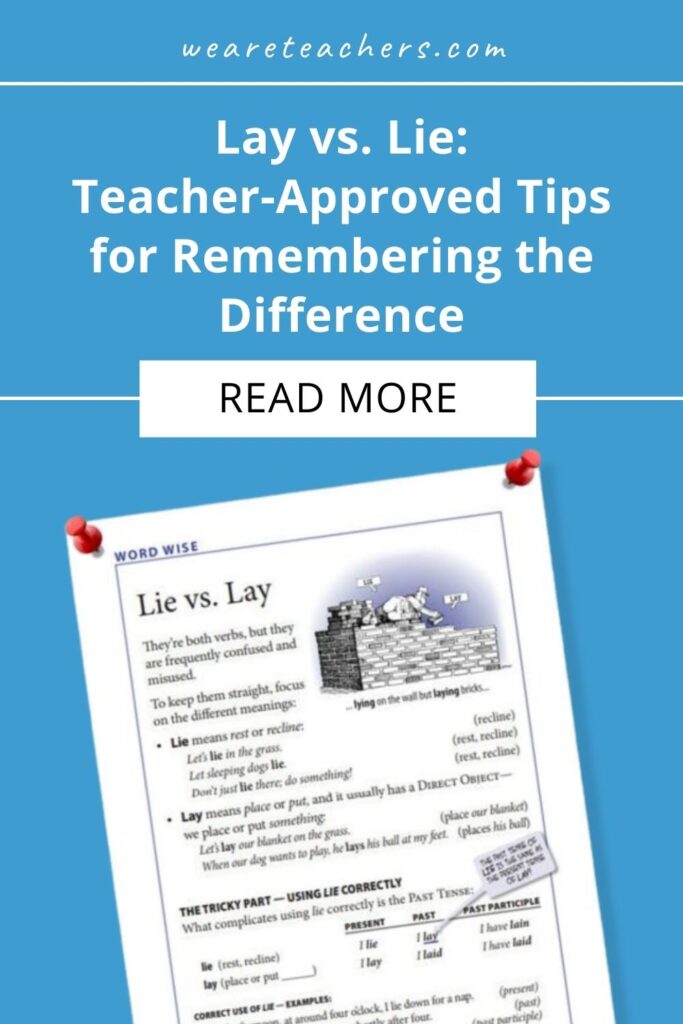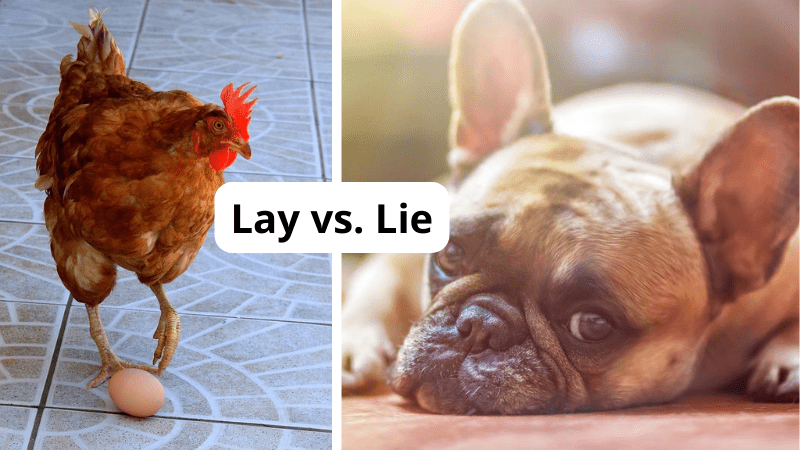Let’s be honest: If you mix up lay vs. lie, it’s not an enormous problem. Most people are still going to understand what you’re saying and might not even notice the difference. But if you’re a stickler for grammar (or you’re a student whose teacher is one of those sticklers), then you’ll want to get it right. Here are some tried-and-true methods for remembering how to use lay and lie correctly. Use them yourself or share them with students.
Lay vs. Lie: In a Nutshell
When you come right down to it, it’s very simple: use “lay” with a direct object, and “lie” without. In other words, you’ll always lay “something” down, but a “something” will lie down. Still confused? These examples should help clear things up.
A hen lays eggs, but a dog lies down.
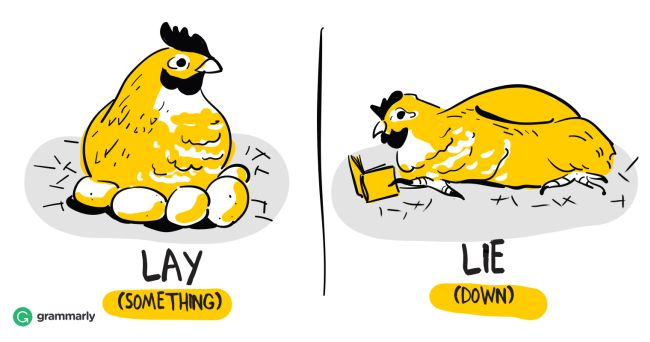
Source: Grammarly
You would never say a hen “lies” her eggs. It just doesn’t sound right. Use that same concept anytime you’re wondering whether “lay” is the right word. Figure out if your sentence has a “hen” and an “egg.” If so, use “lay.” Otherwise, use “lie.”
- Example: The students _____ their papers in the tray at the end of class.
In this example, the students are the “hens,” and their papers are the “eggs.” So, the students lay their papers in the tray at the end of class.
- Example: Lucy was tired, so she went to _____ on her bed for awhile.
In this sentence, there is no “egg.” Lucy isn’t laying something, she herself is going to lie down.
pLAce vs. recLIne
Here’s another easy way to remember it. If you can substitute the word “place” and the sentence still makes sense, use “lay.” When you can swap it out for “recline,” use “lie.” Those words have built-in letters that point you in the right direction!
- Example: I place the towel on the sand, so my mom can recline on it.”
When you swap out the verbs, you get “I lay the towel on the sand, so my mom can lie on it.”
The Grammar Behind Lay or Lie
Now that you know some neat tricks for remembering the two, let’s look at the grammar behind it. As we already noted, you use “lay” with a direct object. Those “eggs” we were talking about? Those are the direct object in the sentence. They are receiving the action of the verb “lay.” The hen is the subject, the one performing the action.
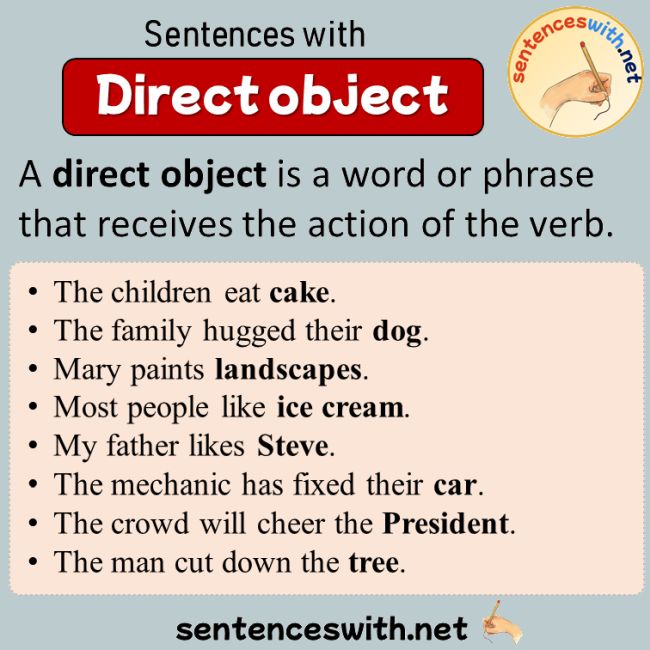
Source: SentencesWith.net
“Lie” will never have a direct object. The subject of the sentence (for instance, the dog) performs the action (lie), but nothing receives the action.
Past-Tense Problems
Ah, irregular verbs. They really know how to confuse us, don’t they? Lay and lie present their own special problem, because the past tense of “lie” is “lay.”

Source: Curvebreakers
Before you start to panic, though, take a deep breath. Because all you have to do is convert your sentence to present tense, figure out the right verb choice, and then pick the proper past-tense conjugation. Yes, this takes an extra few seconds, but if you really want to get it right, it’s worth it.
- Example: Yesterday evening, we ______ a blanket on the grass. Then we ______ down on it to watch for falling stars.
Convert the sentence to present tense: “We LAY a blanket on the grass. Then we LIE down on it to watch for falling stars.” Now all you have to do is choose the proper past tenses.
- Yesterday evening, we LAID a blanket on the grass. Then we LAY down on it to watch for falling stars.
Easy? OK, not really. But as you practice using these verbs, the correct usages will come naturally over time.
How To Teach Lay vs. Lie
Looking for ideas for teaching this tricky concept? Here are some activities that other teachers rely on.
Learn by Doing
Have each student choose one object (book, pencil, anything in the classroom). Next, make up a sentence for one student at a time to act out, leaving a blank where lay or lie should be inserted, and instruct them to fill in the blank and act out the sentence. Here’s an example:
- The teacher says, “Max, _____ your pencil on the table.”
- Max would then respond, “Max, lay your pencil on the table,” and he would lay his pencil on the table.
- Next, the teacher says, “Chloe, please _____ down on the floor.”
- Chloe would then say, “Chloe, please lie down on the floor,” and she would lie down on the floor.
- For past-tense practice, ask other students to explain what just happened. “Max laid his pencil on the table, and Chloe lay down on the floor.”
Watch a “Lay vs. Lie” Video
Check out this quick video for even more tricks and tips.
Try Some Humor
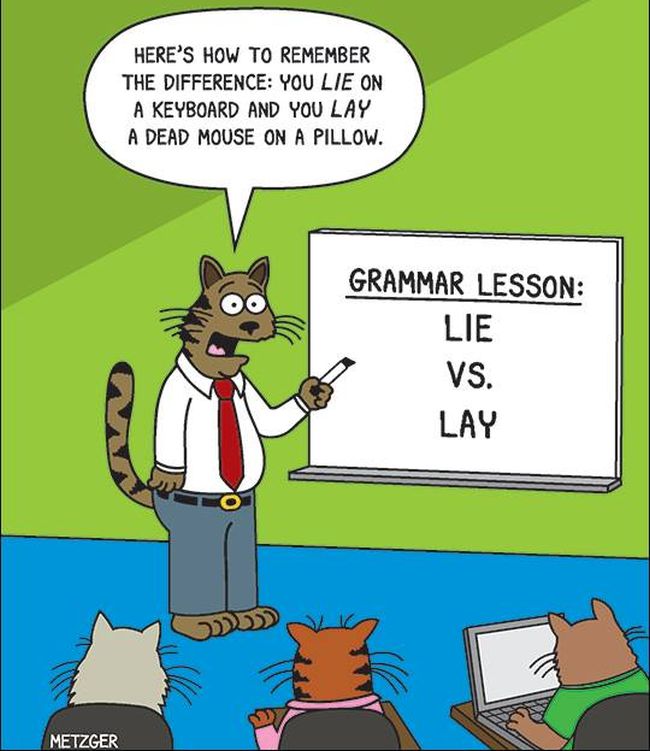
Source: Mystery Fanfare
Find some amusing comics to share with your class. Then, challenge them to create their own!
Hang a Poster
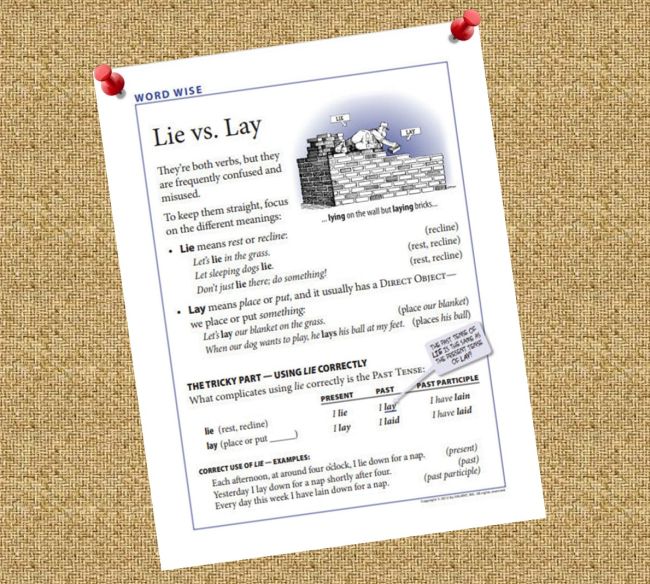
Snag this free printable from Roy Speed on Teachers Pay Teachers, then blow it up to make a poster or turn it into a classroom handout.
Take a Practice Quiz
Online quizzes are much more fun than worksheets! Play the free “Lay vs. Lie” quiz from Quizizz here.
How do you teach your students to remember lay vs. lie? Come share your tips on the WeAreTeachers HELPLINE group on Facebook!
Plus, check out 10 Grammar Mistakes & 10 Lessons to Fix Them.
